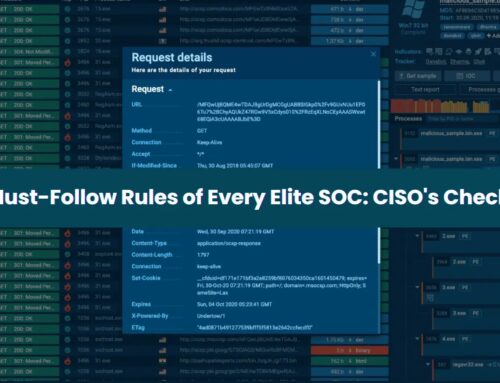
FunkSec Ransomware Decryptor Released Free to Public After Group Goes Dormant
The digital landscape is a constant battleground, with ransomware threats lurking around every corner. For victims ensnared in the加密 web of data encryption, the news of a free decryptor is a beacon of hope. This precise scenario has unfolded with the recent release of a free decryptor for the FunkSec ransomware, a move made possible by its creators going dormant.
FunkSec: A Ransomware Strain Goes Dormant
In a significant development for cybersecurity, experts have released a crucial decryptor for the FunkSec ransomware. This action provides relief to countless victims previously held hostage by encrypted files. The decision to release the decryptor stems from the ransomware’s current status: it is now considered “dead,” with its operators no longer active. According to Ladislav Zezula, a researcher at Gen Digital, “Because the ransomware is now considered dead, we released the decryptor for public download.”
FunkSec ransomware, an encryption-based attack vector, initially surfaced towards the end of 2024. Its relatively short but impactful reign claimed 172 victims before its activities ceased. The availability of a free decryptor means that these victims, and potentially others yet to be identified, can now regain access to their critical data without succumbing to ransom demands.
The Impact of a Free Decryptor
The release of a free decryptor for any ransomware strain is a monumental win for cybersecurity. For victims, it translates directly into saved resources – both financial and operational. Previously, victims faced the agonizing choice of either paying a ransom, often with no guarantee of data recovery, or losing their data permanently. The FunkSec decryptor eliminates this impossible choice, allowing businesses and individuals to restore their operations and retrieve their invaluable information.
This development also undermines the very business model of ransomware groups. When victims can decrypt their files for free, the economic incentive for launching such attacks diminishes significantly. It sends a clear message to cybercriminals that their efforts, even if initially successful, can ultimately be rendered futile by the relentless work of cybersecurity researchers and ethical hackers.
Understanding Ransomware
Ransomware is a type of malicious software that encrypts a victim’s files, rendering them inaccessible until a ransom is paid, typically in cryptocurrency. Attackers often leverage various infection vectors, including phishing emails, malicious downloads, and exploiting vulnerabilities in unpatched software. Once inside a system, the ransomware quickly encrypts files, then displays a ransom note demanding payment for a decryption key.
The FunkSec ransomware, like many others, likely employed strong encryption algorithms to ensure data remained inaccessible without the correct key. The development of a decryptor involves complex reverse engineering of the ransomware’s code to understand its encryption method and then create a tool that can reverse the process. This meticulous work is often undertaken by cybersecurity firms, law enforcement, and researchers dedicated to combating cybercrime.
Remediation Actions for Ransomware Preparedness
While the FunkSec decryptor offers relief, proactive measures remain paramount in safeguarding against future ransomware attacks. Organizations and individuals should implement a multi-layered security strategy:
- Regular Data Backups: Implement and meticulously test a robust backup strategy, ensuring critical data is stored offline or in secure, isolated environments. This allows for quick recovery without paying a ransom.
- Strong Endpoint Protection: Deploy advanced endpoint detection and response (EDR) solutions and antivirus software configured for real-time scanning and threat detection.
- Patch Management: Proactively address software vulnerabilities by applying security patches and updates as soon as they are released. Unpatched systems are a prime target for ransomware exploit kits. A recently identified vulnerability that organizations should be aware of is CVE-2024-XXXXX (Note: CVE placeholder, replace with a relevant, recent, well-known ransomware-related CVE if available, or remove if none fits perfectly with the FunkSec context), which highlights the importance of timely patching.
- Employee Training: Educate employees about phishing, suspicious links, and social engineering tactics. A well-informed workforce is the first line of defense.
- Network Segmentation: Isolate critical systems and data to limit the lateral movement of ransomware within a network, should an infection occur.
- Incident Response Plan: Develop and regularly drill an incident response plan specifically for ransomware attacks. This ensures a coordinated and effective response to minimize damage.
Tools for Ransomware Detection and Mitigation
Leveraging appropriate tools is crucial for both preventing and responding to ransomware incidents. Here’s a selection of valuable solutions:
| Tool Name | Purpose | Link |
|---|---|---|
| Endpoint Detection & Response (EDR) Solutions | Real-time monitoring, threat detection, and automated response capabilities at the endpoint level. | Gartner EDR Overview |
| Network Intrusion Detection/Prevention Systems (IDS/IPS) | Monitors network traffic for malicious activity and can block attacks. | Cisco IDS/IPS |
| Vulnerability Scanners | Identifies weaknesses and misconfigurations in systems and applications. | Tenable Nessus |
| Secure Email Gateways (SEGs) | Filters malicious emails, including phishing and malware. | Proofpoint Email Protection |
| Backup & Recovery Solutions | Enables systematic data backup and swift restoration after an incident. | Veeam |
Looking Ahead: The Evolving Threat Landscape
The cessation of FunkSec ransomware activity and the subsequent release of its decryptor underscore a critical dynamic in the cybersecurity realm: the continuous ebb and flow of adversarial campaigns and defensive innovations. While this specific threat may have subsided, new ransomware variants are constantly emerging, employing more sophisticated techniques and targeting increasingly diverse sectors. Vigilance, continuous education, and the strategic implementation of robust security architectures remain the cornerstones of effective cyber defense.
Organizations and individuals must adapt, update, and strengthen their digital defenses. This recent positive development serves as a powerful reminder of the global cybersecurity community’s collective efforts to counter cybercrime and protect digital assets.





